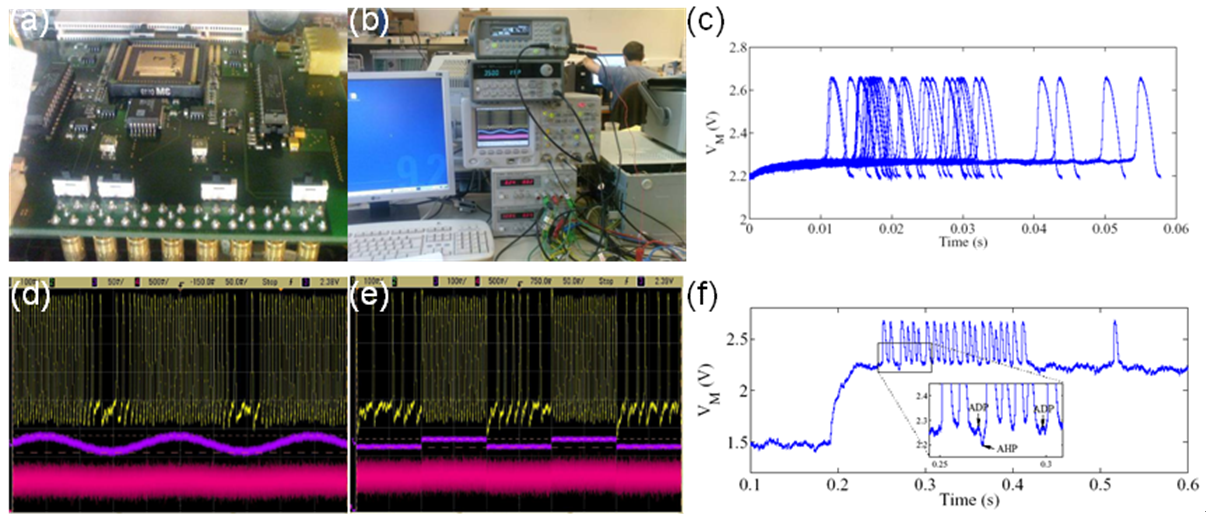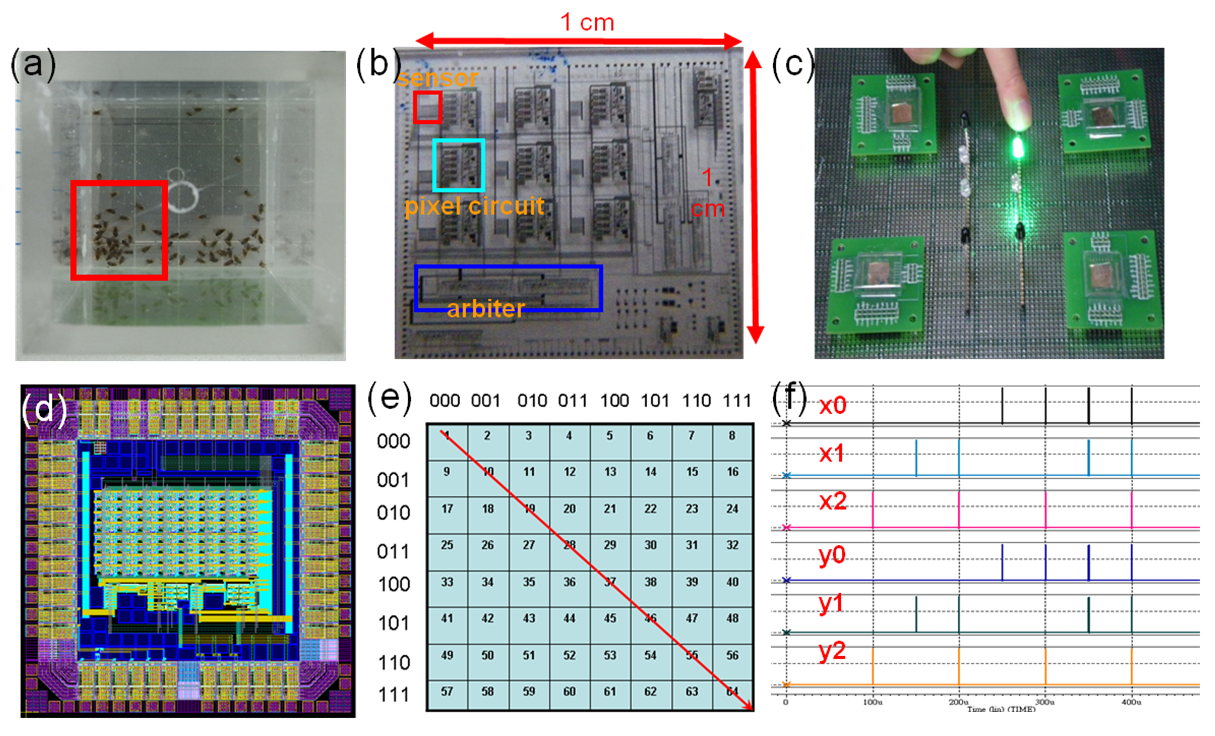Neuromorphic Systems
A. Hybrid Neuron-Silicon Systems
Introduction :One main challenge in neuro-physiological research is the difficulty to control parameters of a small neuronal network individually, while this is important for identifying the effect of each parameter on the function of the network. Hybrid neuron-silicon systems consisting of both biological and electronic neurons have been suggested as a potential approach to address this challenge, as well as to improve neural prostheses. However, hybrid systems reported so far have all relied on good models of neurons to be replaced, which is unobtainable when a new nervous system is to be studied, or when we intend to use electronic neurons to replace neurons which are already impaired. This project therefore investigates essential mechanisms that allow new neurons to integrate/communicate with an existing network of neurons. Based on the identified mechanisms, electronic neurons capable of integrating with biological nervous systems through bi-directional interactions will be designed.
Characteristics :Neuro-electrophysiological techniques will be applied to model essential mechanisms for neurons to interact with each other. Hybrid neuron-computer approach will then be applied to examine the model and to simplify the model for VLSI implementation. The modeled mechanisms will then be implemented as neuromorphic VLSI and tested.
Pre-requisites:Knowledge in neuroscience, Experience in neuro-electrophysiology experiments, Experience in Matlab or C programming, Knowledge in VLSI design.
Professional skills obtained:Knowledge in biophysics, Methodology in modeling biological neural networks, Experience in neuromorphic VLSI design, Experience in advanced neuro-electrophysiology.

Fig.1 (a)The Pamina chip implementing biologically-realistic neuronal models (b)The experiment setup for injecting noise into the Pamina chip (c)Measured neural variability in firing threshold analogous to biological neurons (d)(e)noise-enhanced encoding of waveforms (sin and square) as spike timing (f)Measured sophisticated stochastic behaviours (ADP, AHP) that have been observed in biological neurons.
B. Fly areana
Introduction :Fruit flies have been an useful animal model for studying genomics. However, observing and analysing the fly behaviours are labour-intensive and time-consuming. This research exploits the Low-Temperature-Poly-Silicon (LTPS) technology to implement a neuromorphic micro-system for monitoring fly behaviours automatically. The system integrates photodiodes, adaptive pixel circuits, and event-triggered address-reporting circuits on a glass substrate. With a chip area greater than 1 cm2, flies can move freely above the chip and their positions can be detected and reported automatically. In addition, CMOS vision chip basing on the same architecture is also developed for monitoring different types of fly behaviours.

Fig.2 (a)The behaviour box with fruit flies (b) The neuromorphic vision microsystem on glass for detecting fruit flies in real time (c) The neuromorphic microsystem detects hand movement and turns on LED indicator (d) neuromorphic vision system designed with the standard CMOS technology (e) The trajectory of a movement over the pixels and (f) the corresponding address-event representation of the detected events.
Characteristics :The speed and the changes of light intensity induced by flies’ movement will be first characterised by pilot experiments. The pixel size and the background-light compensation of the neuromorphic vision chip with then be defined and designed. The fabricated vision chip will be integrated with the fly areana to control interactions with flies, so as to study neural circuitry involving spatial learning and memory of fruit flies.
Pre-requisites:Experience in Matlab or C or Java programming, Knowledge in VLSI design, Experience in Image processing.
Professional skills obtained:Experience in neuromorphic VLSI design, Experience in image processing.






